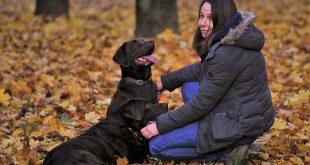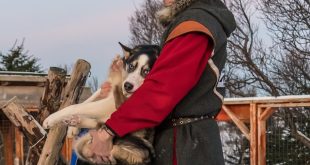Potty Train Older Dog – As dog owners, we understand the struggle of potty training a new puppy. Hours spent outside, countless rolls of paper towels, and a never-ending mess to clean up. But what about an older dog who still hasn’t caught on to the housebreaking routine? It can be just as frustrating, but don’t lose hope. With patience and persistence, potty training an older dog is possible. In this article, we’ll provide tips and tricks for successfully teaching your furry friend to do their business outside.
Table of Contents
1. It’s Never Too Late: Tips for Potty Training Your Older Dog
Older dogs can absolutely be potty trained, it just takes patience and consistency. Here are some tips to help you and your furry friend through the process:
- Develop a schedule. Dogs thrive on routine, so make sure to take your pup outside at consistent times throughout the day. This will help them develop a sense of when it’s time to go and reduce accidents indoors.
- Use positive reinforcement. When your dog goes potty outside, make sure to praise them, give them a treat, or offer some other form of positive reinforcement. This will encourage them to continue using the designated potty area.
- Limit access to your home. While your dog is still learning, it might be helpful to limit their access to certain parts of your home. This will make it easier to supervise them and prevent accidents from occurring in areas you aren’t regularly monitoring.
Remember, potty training an older dog is a process, so don’t get discouraged if there are some setbacks along the way. With patience and consistency, you can help your furry friend learn good potty habits and maintain them for years to come!
2. Understanding Why Older Dogs Struggle with Potty Training
Older dogs have a harder time with potty training because their body systems are not as efficient as they used to be. Here are some potential reasons for this:
– Muscle Weakness: Older dogs may experience muscle weakness, making it difficult to hold their bladder or control their bowels. This can be due to aging or underlying health conditions.
– Decreased Sensitivity: As dogs age, their nerve endings may become less sensitive. This means they may not feel the urge to go potty as strongly as they used to, making accidents more likely.
– Health Issues: Several health conditions can affect a dog’s ability to control their bowel and bladder. For example, urinary tract infections, kidney disease, and diabetes can all cause frequent urination or accidents.
– Cognitive Decline: As dogs age, they may also experience cognitive decline. This can affect their ability to remember where they’re supposed to go potty or understand that going inside is not acceptable.
It’s important to be patient and understanding with an older dog who is struggling with potty training. Consider taking them to the vet to rule out any underlying health conditions, and make sure to provide plenty of opportunities for them to go outside. You can also try using diapers or belly bands to prevent accidents inside the house. Above all, remember that accidents happen and it’s not your dog’s fault.
3. Patience and Persistence: The Keys to Successfully Potty Training an Older Dog
To successfully potty train an older dog, you must have patience and persistence. Here are some tips to help you achieve success:
– Create a schedule: Set a routine for regular bathroom breaks throughout the day. Dogs thrive on routine, having a set schedule will help them understand when it’s time to do their business.
– Give lots of praise: Positive reinforcement goes a long way with potty training. When your dog goes outside, make a big deal out of it. Give lots of praise and even a treat to let them know they did a good job.
– Watch for cues: Pay attention to your dog’s body language. If they start sniffing around or circling, it’s a good indication that they need to go outside.
– Be consistent: Consistency is key when it comes to potty training. Stick to your schedule and don’t give up. Your dog will learn over time what is expected of them.
Remember, it’s important to be patient and persistent. Every dog learns at their own pace and may have setbacks along the way. With dedication and consistency, you can successfully potty train your older dog.
4. Practical Techniques for Housebreaking an Older Dog
When it comes to housebreaking an older dog, there are a few practical techniques that can make the process smoother. Here are some tips to help make the transition easier for both you and your furry friend:
– Use a Crate: A crate can be a valuable tool when housebreaking any dog, but it can be particularly useful for older pups who may already have established habits. The key is to use the crate as a safe and comfortable space for your dog, rather than a punishment. Place a cozy bed and some toys inside, and make sure your dog has access to water. Start with short periods of time in the crate and gradually increase as your dog becomes more comfortable.
– Watch for Signals: Pay attention to your dog’s signals that they need to go outside, such as sniffing, pacing, or whining. When you see these signs, take your dog out immediately and give them plenty of praise when they do their business outside. Over time, your dog will start to associate going outside with positive reinforcement.
– Stick to a Routine: Consistency is key when it comes to housebreaking an older dog. Establish a regular schedule for feeding, playtime, and potty breaks, and try to stick to it as much as possible. This will help your dog know what to expect and make it easier for them to learn and remember the rules.
Remember, housebreaking an older dog may take a bit of extra time and patience, but with these practical techniques, you can help your pup succeed.
5. Maintaining Cleanliness and Consistency Throughout the Potty Training Process
Maintaining cleanliness is an essential aspect of potty training. Children can be messy, and accidents can happen. So, it is crucial to keep a clean and sanitized surrounding, especially during this process.
One way to ensure cleanliness is to take the child to the bathroom at regular intervals, at least every two hours, and more frequently if the child shows signs of needing to go. It is important to praise and encourage the child for using the potty correctly while reinforcing good hygiene practices such as wiping and handwashing.
Consistency is also vital in the potty training process. Using the same words, rewards, and reinforcement techniques will help the child understand what is expected of them. Being consistent helps to establish a routine and trains the child’s brain to make the connection between using the potty and receiving positive feedback. Remember, it is essential to avoid punishing or shaming the child as it can hinder progress. Consistency and positive reinforcement are key.
Having a potty-trained older dog is a great accomplishment to be proud of. With patience and perseverance, you can easily make the process easier so your furry friend can enter their new phase of adulthood with finesses. Good luck!
 Treat For Dog – Brain Training for Dogs, Dog Training & Obedience Discover Treat For Dog and get your pup on the path to smarter, happier, and healthier living with brain training for dogs.
Treat For Dog – Brain Training for Dogs, Dog Training & Obedience Discover Treat For Dog and get your pup on the path to smarter, happier, and healthier living with brain training for dogs.




